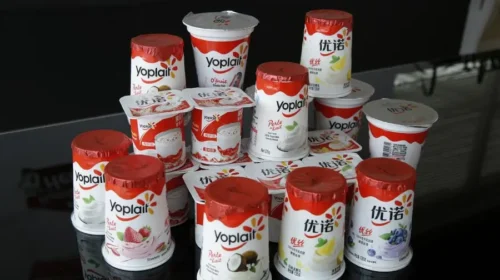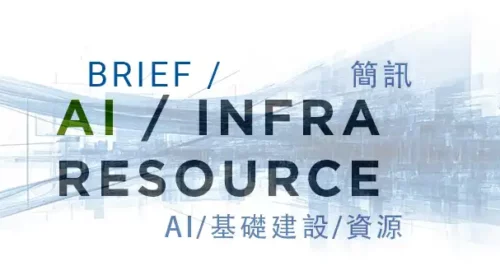The online loan facilitator found itself under fire from Grizzly Research, accused of inflating its profits, but the claims failed to dent the company’s share price or deliver a resounding blow to shareholder Zhou Hongyi
Key Takeaways:
- The credit services company disputed Grizzly’s claim of overstated profits, saying a discrepancy between its U.S. and Chinese filings was due to differing reporting requirements
- Qifu reported cash flow of 1.96 billion yuan last quarter and is buying back $350 million worth of shares, lending support to the stock price
By Ken Lo
The founder of China’s 360 Group is used to being in the spotlight as a celebrated tech tycoon, but the latest bout of publicity would hardly have been welcome.
A credit services company chaired until recently by the Internet entrepreneur Zhou Hongyi found itself at the center of an online storm in late September, accused by a notorious U.S. short seller of overstating profits.
In its highly critical report, Grizzly Research called for a regulatory probe into the finances of Qifu Technology Inc.(QFIN.US, 3660.HK), an online loan facilitator formerly known as 360 Finance and 360 DigiTech, but the company issued a swift rebuttal of what it called inaccurate, flawed and misleading claims.
The most serious accusation leveled at Qifu focused on a discrepancy in the amount of profit reported to Chinese and U.S. regulators, which Grizzly characterized as a typical red flag for suspected fraud.
Misdeed or misunderstanding?
However, Qifu said the claim was based on a misunderstanding of the financial data and the respective reporting requirements.
Taking the financial years of 2022 and 2023 as an example, the company said its main operating entity in China earned annual revenues of 17 billion yuan ($2.42 billion) and 16 billion yuan, generating net profits of 5.2 billion yuan and 4.7 billion yuan, calculated on a Chinese GAAP basis. However, filings to U.S. regulators at the Securities and Exchange Commission (SEC) needed to be submitted on a U.S. GAAP basis, translating into revenues of 16.6 billion yuan and 16.3 billion yuan and net profits of 4 billion yuan and 4.3 billion yuan.
Qifu said the mismatch was “primarily attributable to differences in accounting treatments” between the two jurisdictions, as well as a disparity in reporting entities. The Chinese data came from the company’s main operating entity in China, excluding some Chinese subsidiaries and affiliates included in its combined financial statements, while the figures given to the SEC came from the legal structure registered overseas, known as a Variable Interest Entity (VIE).
Chinese tech companies have typically used VIEs as vehicles for overseas listings, allowing them to access capital without giving foreign investors control over potentially sensitive sectors such as the Internet, education and financial services. The VIE controls the operating entity through a contractual agreement so that the profit can be transferred abroad.
But Qifu’s VIE structure is rather more complicated than the standard model for a Chinese Internet company. Its predecessor company, 360 Finance, was spun off from the 360 Group in 2016 and listed on the Nasdaq in 2018. The company was restructured and set up a wholly owned subsidiary in the Cayman Islands, known as Shanghai Qiyue.
That subsidiary entered into “VIE” contracts with the nominal shareholder of the company’s three major operating entities in China, Shanghai Qibutianxia, allowing the company to exercise effective control over the VIEs and receive the economic benefits.
Qifu rejected the short seller’s assertion that it uses Shanghai Qibutianxia to manipulate its financial statements.
In its response, the company said that before 2023 some financial institutions required Shanghai Qibutianxia to provide back-to-back guarantees for loans facilitated and guaranteed by the company’s operating entities. As a result, Shanghai Qibutianxia committed to covering any shortfall if repayments to the banks were not made on time. The guarantee arrangement did not increase the company’s risk exposures, Qifu said, nor was interest transferred to Shanghai Qibutianxia.
The credit services company also took issue with the way the report portrayed Zhou’s role, saying he was mistakenly described as a controlling shareholder in Qifu when he beneficially owned just 13.8% of ordinary shares as of the end of February. As chairman of the board, Zhou was not actively involved in the day-to-day running of the company and stepped down in August, the company said.
In its litany of accusations, the short seller also said it suspected the company was secretly overleveraged, with rising delinquency rates and a declining cash balance.
The company said the arguments about its delinquency rates and loan provisions were based on a misunderstanding of its financial practices and relevant accounting standards. The suggestion that it was inflating profits to make up for declining cash was completely false, the statement said.
Looking at the company’s financial statements over the past four years, the cash, cash equivalents and restricted cash balance rose in the first three years but fell from 10.5 billion yuan at the end of 2022 to 7.56 billion yuan at the end of 2023, before recovering somewhat to 8.4 billion yuan by the end of June 2024. This was attributed to growth in loans on its balance sheet, cash dividends for shareholders and stock repurchase programs.
The company also criticized the report’s use of what it called a backward-looking 90 day+ delinquency rate when assessing risk exposure. Qifu said it preferred to use forward-looking metrics to assess credit risk rather than rely on traditional delinquency rates.
The company’s share price has been resilient so far in the face of questions over its accounts. Qifu’s stock has risen more than 15% on the Hong Kong market over the past month and is sitting on a gain of more than 90% for the year to date.
A few days before the short seller’s report was released, the company announced earnings for the second quarter, reporting a 26% jump in net profit to 1.38 billion yuan and an operating cash flow of 1.96 billion yuan. And it unveiled plans to launch a year-long stock repurchase scheme totaling $350 million.
Those figures, coupled with a trailing price-to-earnings (P/E) ratio of 6.7 times, provide no solid grounds for investor concern.
To subscribe to Bamboo Works weekly free newsletter, click here






